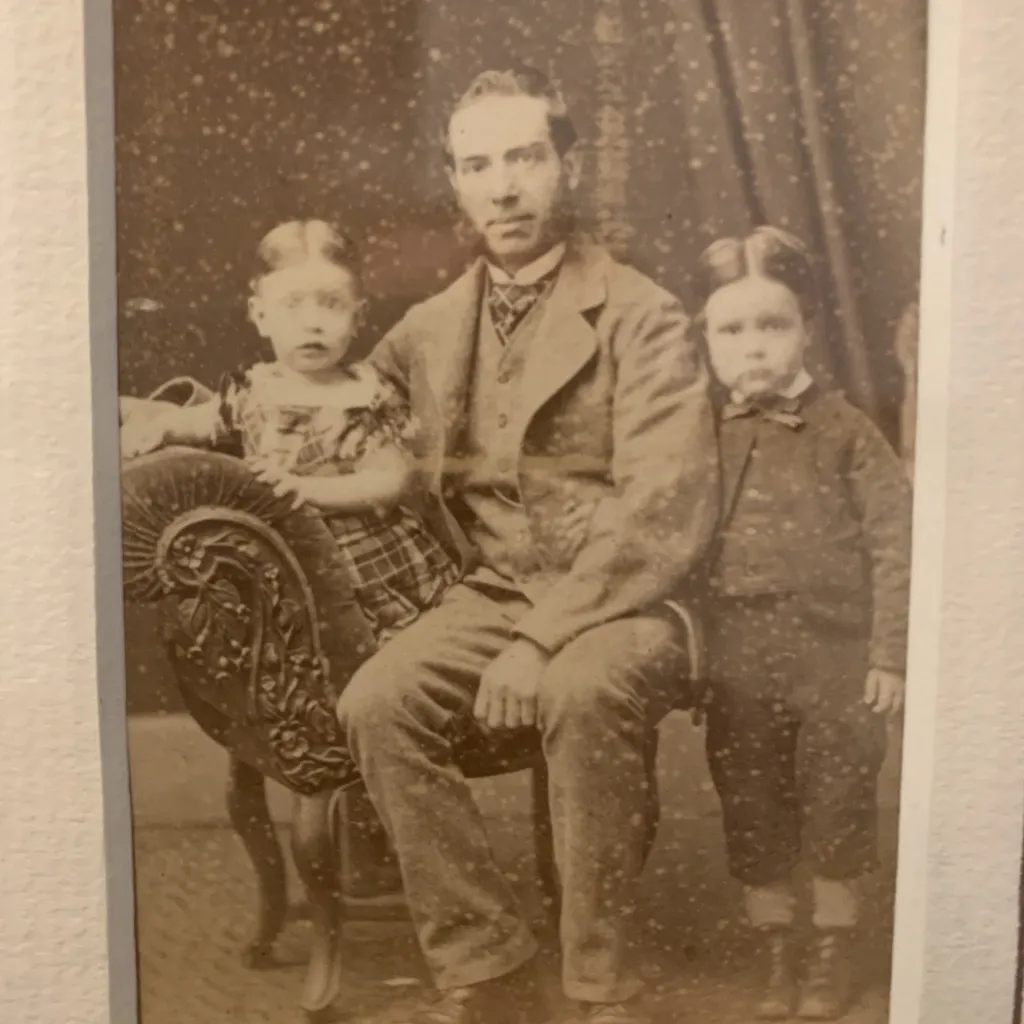Could this be a portrait of William, Arthur and Lucy?

I have numerous lovely old Victorian photographs of my ancestors passed down from my mother. I think this one portrays William Sly (1845–1929) and his two youngest children, Arthur (b1882) and Lucy (b1886), who lived in Warwickshire. Can you date the photo to see if it is them?
Graham Holton
This scan is of a professional Victorian studio portrait in a modern frame. If the picture inside appears to be the original carte de visite photograph, carefully remove it to view the card mount. These were often printed with the studio name and address – key evidence.
Meanwhile, there are several visual clues. The man wears a smart three-piece lounge suit and cravat characteristic of the late 1860s/early 1870s. His bushy ‘mutton-chop’ whiskers are also typical of that period. The children are well dressed in mid-Victorian juvenile modes. His son wears the knickerbockers suit introduced for small boys in the 1860s, while the toddler wears a boat-necked frock with short puffed sleeves, fashionable throughout the 1860s and early 1870s.
Another clue is the seat: wooden-framed, padded-velvet roll-backed furniture first appeared as props in studio portraits c1866/1867.
So, according to this evidence the photo was taken c1867–1873. If the man is indeed William Sly, his age suggests it’s at least 1870. The children cannot be Arthur and Lucy. Might they be two older children?
- The toddler (aged around two) could be male or female, since Victorian infants all wore short frocks until sons were ‘breeched’ – ie put into their first pair of masculine knickerbockers. However, the parted hair probably indicates a boy.
- The distinctive curved sleeves of the man’s jacket are most typical of the 1860s, while his narrow trousers, patterned cravat and swept-back hair are all late 1860s/early 1870s modes.
- The boy standing on the right, aged about four, must have been recently ‘breeched’. This rite of passage occurred approximately when a boy was between three and seven years of age.
- The boy’s short bolero-style jacket, fastened only at the neck, typifies the 1860s knickerbockers suit, often called a ‘zouave’ costume. His narrow knickerbockers suggest it’s the late 1860s/early 1870s.
- Small children often aid identification of family photographs, because their ages are easier to judge than those of adults. These juveniles were born approximately two years apart within the period c1863–1871.
Jayne Shrimpton is a professional dress historian and portrait specialist
